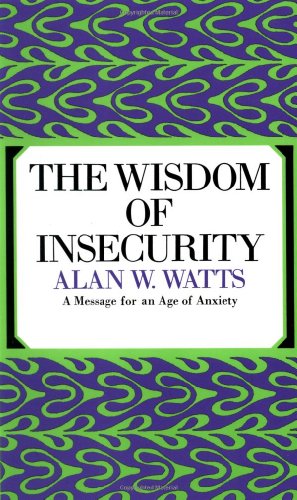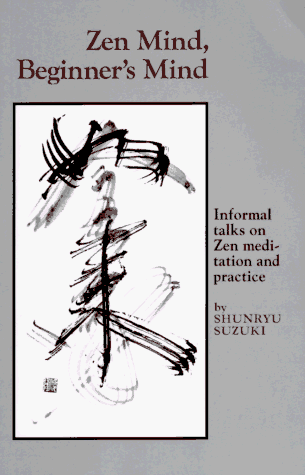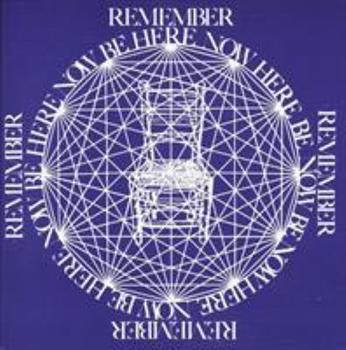
Collective Memory—
In my philosophy of film class, I always include Richard Linklater’s Waking Life, a veritable philosophy fest in words, ideas, colors, conversations, and even sound. With all held together under the grand question of what it means to live authentically, the topics span from free will to lucid dreaming, to the role of creativity and art in the human experience—touching on the central inquiry in the branch of philosophy known as Aesthetics.
In one scene, two people lie in bed, speculating about about things of an esoteric nature… especially reincarnation and the notion of “collective memory.”
“Maybe reincarnation is collective memory,” the character played by French actress Julie Delpy, suggests… “What I’m trying to say is that somehow I believe reincarnation is just a poetic expression of what collective memory really is.” And then she continues with a couple of examples, most notably, the crossword example, now of some repute:
There was this article by this biochemist that I read not long ago, and he was talking about how when a member of our species is born, it has a billion years of memory to draw on. And this is where we inherit our instincts. I like that. It’s like, there’s this whole telepathic thing going on that we’re all a part of, whether we’re conscious of it or not. That would explain why there are all these seemingly spontaneous, worldwide, innovative leaps in science, in the arts. You know, like the same results popping up everywhere, independent of each other. Some guy on a computer, he figures something out, and then almost simultaneously, a bunch of other people all over the world figure out the same thing. They did this study. They isolated a group of people over time, and they monitored their abilities at crossword puzzles… in relation to the general population. And they secretly gave them a day-old crossword, one that had already been answered by thousands of other people… And their scores went up dramatically, like 20 percent. So, it’s like once the answers are “out there,” people can pick up on them. It’s like, we’re all telepathically sharing our experiences. (Waking Life, 2001)
This phenomenon, whereby somehow, in a way that seems to exceed what we understand about reality by way of Newtonian causation (which applies just fine on the materialistic level), we are able to affect one another and share one another’s knowledge collectively, is sometimes referred to as the collective consciousness – a term first coined by French sociologist, Emile Durkheim.
Yogis Knew it When—
Yogis have had a similar belief for thousands of years… My own teacher, Guru Singh, speaks often about how we carry seven generations of familial information in our mind-body system:
It’s both a hologram within countless holograms, and a mirror of your consciousness reflecting images and experiences from the programming of your evolutionary history and future destiny. Your consciousness is an assemblage of all these images and stories from throughout the entire history of your incarnations and generations of your ancestry, and then projected through countless opportunities into your future…Your evolution — through tens of thousands of lives — makes up this kaleidoscope of your body and consciousness. The lives of your ancestors — for seven generations — all contribute to the makeup and experience of your physical body. Whenever you don’t realize that your experience is a mirror of all this, that’s when you’re living as a slave to the actions and reactions of the moment. Freedom is to experience your experience, while acknowledging it as a holographic reflection — an assemblage of personal perspectives experienced through the window of this projected consciousness and a mirror of reflections. This all takes place within your mental body — a result of your brain and its connection, or disconnection, with the Universal mind. When your brain is connected to the Universal mind — achieved through consistent meditation and contemplation — your thoughts are fresh and intuitive . . . flowing with the ease and grace of willingness. (Guru Singh, 2019)
So, to “wake up,” is to consciously recognize these tendrils of influences without remaining enslaved to the stories they carry. This is part of what it means to heal. For, to become liberated from “the story” is to heal. And when we heal ourselves, we also heal those past generations, as well as the future ones. There is no such thing as living in a solitary or isolated state… we are all interconnected, as one, in ways that we are just beginning to understand.
Telepathic Connections Abound… And Yet, We’re Still Bound to the Senses—
The characters in Waking Life pondered the idea that somehow, once “the answers are out there,” we can all tap into them telepathically… in a way that mirrors what the Yogis have said throughout the ages… in a way that cannot be accounted for by the traditional five senses. And yet, still today, centuries after the Age of Enlightenment, scientists run into all kinds of barriers and road blocks when trying to explore these sorts of topics.
Consider the case of British scientist Rupert Sheldrake, whose theory of Morphic Resonance was rejected as “heresy,” as if it were the 17th century. In short, he proposed that DNA is insufficient for explaining much of the behavior that is seen in all of nature, including the means by which we communicate with one another. He suggests that the missing gaps in science may be better explained by the idea of what he calls a morphic field, which is described as a field of information that influences everything, and also stores the collective habits of species. Think of it as something like an electromagnetic field, but as it relates to the extension of our “mind.”
One of the most interesting aspects of Sheldrake’s idea is its ability to account for telepathic experiences:
The morphic fields of social groups connect together members of the group even when they are many miles apart, and provide channels of communication through which organisms can stay in touch at a distance. They help provide an explanation for telepathy.
But, the mystical nature of what he was proposing was so offensive to the traditional scientific community that upon the release of his book, one influential reviewer proposed, in no ambiguous terms, that it would be well to burn it.
Eight Personal Anecdotes of Telepathy (Or… Music, Bed and Instagram)—
1.I had just reconnected with an old friend from when I was 14 years old. Gino is two years older. We both worked in the Italian deli (I said I was 16). We became fast friends and quickly bonded over our shared obsession with Elvis Costello. When we reconnected, it was just before the pandemic hit, so I was sitting in my regular spot in the neighborhood coffeeshop, and had just begun typing out a response to his email when Elvis Costello’s “(What’s So Funny ‘Bout) Peace, Love and Understanding” started playing over the coffeeshop speakers.
2.This one also involves Gino and music: I sent him a link to a Joe Jackson video on Youtube. His response was immediate… “No way! Just two hours ago I was filling out security questions for an online form and it asked me for my first concert, which was Joe Jackson. I hadn’t thought of him in years. Then you send me this video!”
3.I was finishing the watercolors for my storybook The Sycamore That Wanted To Be a Cactus, and one of them required a detailed rendering of the Fed Ex truck, with its readily identifiable purple and orange logo. I enjoyed doing it and this feeling was enhanced by my recollection that my biological father, who passed away when I was a young girl, had done sign work as a career. His father (my grandfather) had also been a Graphic Artist. I felt the need to share this moment, which was imbued with all kinds of special significance… that I was somehow carrying out my family lineage… a sort of “divine right”… through the act of painting a little sign in great detail. So, I sent a text to my friend Sharon, saying that “this is what my dad did in the 70’s, and back then, it was all by hand, and I really like doing this…” One hour later, I received a phone call from my aunt DD, his sister, asking for my mailing address. I hadn’t spoken to her in years. She explained that she’s going to be sending me a cherished ring that my dad wore… one that my mom had given to him.
4.It was last April, 2020: I had just posted another singing video to my karaoke channel on Instagram. The song was “Hello It’s Late,” by Stone Temple Pilots, a rock group I have followed for many years. I had gotten to know them a bit during my years as a music reviewer, especially bassist Rob Deleo, who I talked with the most, and so I decided to look for him on Instagram, thinking it might be fun to reconnect after all these years, or at least tag him. When I found him, I saw that he had just posted a picture from the making of that very song, only a few minutes prior.
5.I had just woken from a dream, imagining myself in conversation with a relative. I was responding to a “made up” question, saying “I’m small…” And then I clarified, as if having a real conversation, “What I mean is that I’m not very tall… I’m a small person.” And I continued repeating this imaginary, one-sided dialogue in my head, when I decided to check my email. I saw that there was one from him in my Inbox. After the usual greetings, there was a random by the way… “I’ll explain later,” he said, “but I was wondering… how tall are you?”
6.It was just before going to bed one night. You know those loose, out of left field thoughts that swirl through your mind, just before slipping into dreamland? But I was still cognizant of one thought in particular… I was thinking about how neat it would be to name a baby girl “Misty.” A strange thought to be having, considering I’m past my childbearing season. And besides, I never wanted more than my one wonderful son, anyway. But I continued my musing on the name “Misty.” Like a misty, foggy beach… And, like that wonderful song, “Misty.” And then, I was wishing I had had better luck singing that one, but alas, it didn’t seem to suit my voice. Then I decided that I couldn’t sleep yet, and so I opened up my phone. Because Instagram was the last place I had visited earlier, it popped right up. At that moment, the latest post from a fellow singer who calls himself “Jazz Cat” was right there. He was playing “Misty” on guitar while a female vocalist sang the song.
7.It was in the evening, when I often watch live music on Youtube. I had just watched a recording of Burton Cummings, from The Guess Who, on the Stern show. Youtube now offers me things that it “thinks” I’ll like, and say what you will of Stern… he rescues cats and gets good musical performances out of artists! So, then I turned off the TV. Not quite ready to go to bed, I looked through some old texts from a boyfriend of the past. I was hoping to find a link to another Cummings performance of the song “Undun.” Unsuccessful, I got tired of scrolling and went to bed, but it must’ve gotten into my psyche… I woke up in the morning from a dream with him in it. I immediately had the thought, Whew, thank God it was just a dream. And then I had another thought, Wouldn’t that be something if there was a text from him? And just at that very moment, as if to test it out, I picked up my phone, and there was, indeed, a text from him. But it gets better… It was simply a link to… The Guess Who Greatest Hits, on Apple Music. I checked the time of the text… it was sent at exactly the moment when I awoke, although I hadn’t heard it, as sounds were silenced.
8.This one is to the point: One day, one of my good friends and I sent each other pictures of the Eiffel Tower, by text. At exactly the same minute, without any prior conversation leading up to this seemingly random exchange.
*For more on Rupert Sheldrake’s story, see the BBC documentary on Youtube entitled “Rupert Sheldrake: The Most Heretical Scientist of Our Time
*I also published this on awaken.com, which I contribute to regularly.














